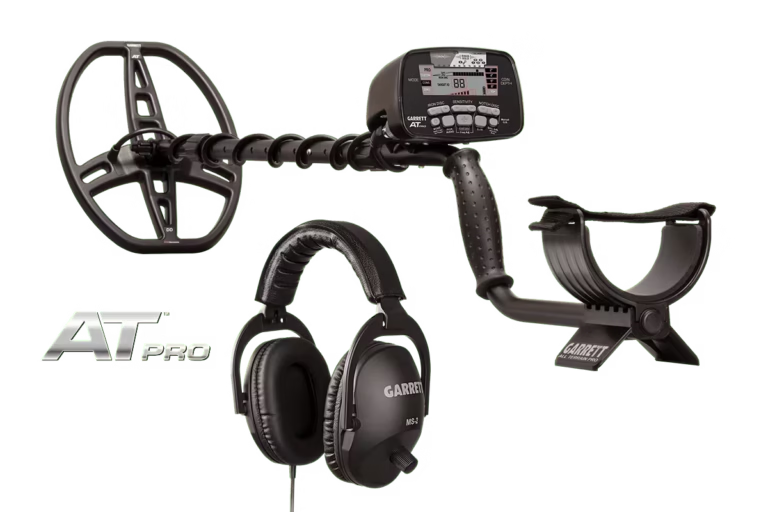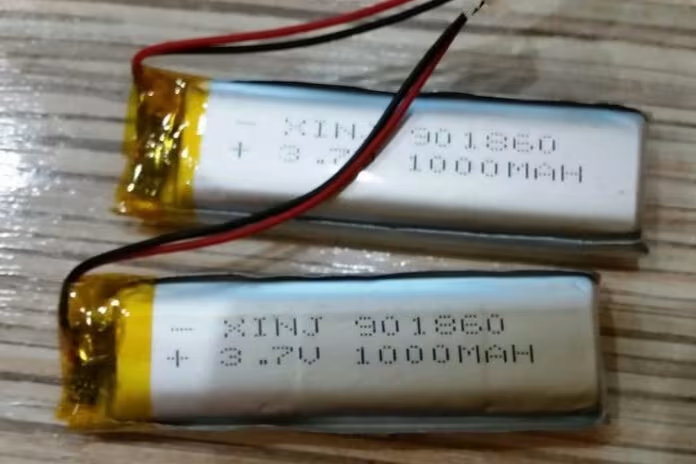Last weekend, I found myself standing in my garage with two metal detectors that perfectly capture the evolution of our hobby. In my left hand, the trusty Garrett AT Pro—a machine that revolutionized detecting when it hit the market in 2010. In my right hand, the sleek Equinox 900, representing everything modern detection technology can offer. The contrast was striking, and it got me thinking about just how far we’ve come.
I remember when the AT Pro was the detector everyone wanted. Flip through any issue of American Digger magazine from 2010 to 2017, and you’ll see page after page of incredible finds made with that machine. It transformed detecting from the analog era into the digital age, and at $550, it was accessible enough for serious hobbyists without breaking the bank. But technology doesn’t stand still, and after spending considerable time with both machines, I wanted to share what this technological leap actually means for folks like us who live for that next great find.
Here’s my takeaway: while the AT Pro remains a proven workhorse, the advances in modern multi-frequency machines like the Equinox represent a genuine game-changer, especially if you hunt challenging sites.
Old School Reliability Meets New School Innovation
The differences between these machines go way beyond just age. At its core, the AT Pro runs on a single 15 kHz frequency. That’s served me well over the years, particularly in parks and freshwater beaches, but it has limitations. The moment you hit saltwater sand, that single frequency starts struggling with mineralization. I learned this the hard way on a Virginia Beach hunt that left me questioning my machine rather than my technique.
The Equinox’s multi-frequency approach changes everything. Instead of being locked into one frequency, it’s simultaneously running multiple frequencies to give you better target separation and much improved performance in challenging ground conditions. It’s like the difference between having one tool versus a complete toolkit.
The convenience factor alone tells the story of how our hobby has evolved. Gone are the days of carrying spare AA batteries or dealing with corroded battery compartments after a beach hunt. The Equinox’s built-in rechargeable battery just makes sense for all-day hunting sessions. And while the AT Pro requires an adapter for wireless headphones, the Equinox was designed with wireless connectivity in mind from day one.
But here’s where things get really interesting—the control philosophy. The AT Pro keeps things simple with six modes: three standard and three pro settings. Most of the time, I just run it in Pro Zero and adjust sensitivity as needed. It’s a “turn on and hunt” approach that appeals to folks who want to focus on swinging the coil, not tweaking settings.
The Equinox takes the opposite approach. You get two park modes, two field modes, and two beach modes, each with extensive customization options. The AT Pro’s discrimination system notches out five target IDs at once starting at 40, which works but isn’t exactly precise. The Equinox lets you accept or reject individual target IDs, giving you surgical control over what you want to hear.
The real differentiators are iron bias and recovery speed controls—features that simply don’t exist on the AT Pro. Iron bias lets you adjust how aggressively the machine interprets iron signals, while recovery speed determines how quickly the detector processes targets. These aren’t just fancy features; they’re tools that can make or break your success in trashy sites.
Reality Check: What the Field Tests Actually Showed

I’ll be honest—some of the marketing claims about detection depth get exaggerated, so I wanted to see what these machines actually deliver in real conditions. I set up some tests in my backyard using targets buried in fairly mineralized soil, and the results were more nuanced than you might expect.
For depth testing, I buried a dime at six inches and another at seven inches, plus a .58 caliber mini ball at nine inches. Both machines detected the six-inch dime without issue, though the target IDs weren’t always spot-on due to the mineralization and depth. The seven-inch dime gave both machines trouble, with numbers jumping all over the place. The nine-inch mini ball was detectable on both, but again, you’d be relying more on audio cues than target ID numbers.
The gold sensitivity tests were eye-opening, though I need to clarify something important—these were air tests, meaning I was measuring how high above the target I could hold the coil and still get a response, not burial depth. Using small coils on both machines, the AT Pro detected a 0.1-gram nugget at about one inch above the target and a 0.4-gram nugget at three inches above. The Equinox pushed those numbers to 2.5 inches and five inches respectively. That’s a significant sensitivity advantage if you’re into prospecting.
But the separation test is where the modern technology really shines. I set up two long nails with a penny between them and started moving the nails closer together until the machines couldn’t pick up the penny anymore. The AT Pro needed substantial spacing before it could identify the coin between the iron. The Equinox, running at recovery speed 3, kept detecting that penny even when I moved the nails almost touching. In iron-heavy sites like old homesteads or Civil War camps, that kind of separation ability can mean the difference between walking over good targets and actually finding them.
During some recent field hunts, I found a flattened coat button at eight-plus inches. Both machines detected it, but the Equinox gave me more confidence in the target ID. A six-inch pewter button performed similarly on both machines, but a deeper cuff button really showed the Equinox’s advantage in providing clearer target indication when making those crucial dig-or-don’t-dig decisions.
The Hunter’s Dilemma: Simple or Sophisticated?

This brings me to the real question every detectorist faces: do you want simplicity or do you want every possible advantage technology can provide?
The Garrett AT Pro metal detector’s appeal hasn’t diminished. It’s still the machine I’d recommend to someone just getting into the hobby or anyone who values straightforward operation. There’s something to be said for a detector that just works without requiring you to become an engineer. You balance the ground, set your sensitivity, pick your mode, and start hunting. The learning curve is minimal, and the proven track record speaks for itself.
The Equinox demands more from you as an operator. Those multiple search modes aren’t just marketing—you need to understand when to use park mode versus field mode versus beach mode. The iron bias settings require field experience to optimize properly. The tone options range from simple single-tone operation up to 50 tones or even full tonal range. You can spend hours tweaking noise cancel functions, ground balance tracking, and recovery speeds.
Here’s the thing though—all that complexity can bite you if you’re not careful. I’ve seen hunters get so caught up in adjusting settings that they forget to actually hunt. Sometimes the best detector is the one you understand completely, even if it’s not the most advanced machine available.
Cost-wise, the AT Pro’s $550 price point remains attractive, especially for budget-conscious hunters. The Equinox 600 sits in a similar price range, though word is that Minelab might discontinue it now that the 700 model is out. That’s worth considering if you’re looking at the 600 specifically.
Where the Rubber Meets the Road
After extensive time with both machines, here’s my honest assessment: the 15-year technology gap is real and meaningful. The Equinox’s multi-frequency capability and advanced target separation controls offer genuine performance advantages that translate to better finds in challenging conditions.
But—and this is important—the Garrett AT Pro metal detector isn’t suddenly obsolete. For straightforward park hunting, school yards, and most field work, it’s still an excellent choice. The reliability factor can’t be understated, and there’s value in mastering a simpler machine before moving to more complex technology.
Where the Equinox really justifies its complexity is in tough environments. Beach hunting, sites with heavy iron contamination, or areas with challenging mineralization—these are where modern technology earns its keep. The improved separation alone has saved me countless hours of digging junk targets that would have fooled older machines.
The upgrade decision ultimately comes down to your hunting style and patience for learning new technology. If you’re primarily hunting easy sites and happy with your current success rate, the AT Pro will continue serving you well. But if you find yourself frustrated by missed targets in trashy areas or struggling with ground conditions, the performance gains of modern detectors are substantial enough to justify the learning investment.
Both machines will find treasure—that much is certain. The real question isn’t whether you need to upgrade, but whether the situations where you hunt will benefit from what modern technology offers. In my experience, understanding these differences helps you make equipment decisions based on actual performance needs rather than just wanting the latest and greatest.
The hobby has come a long way since 2010, and frankly, I’m excited to see where the next 15 years take us. But for now, having experienced both eras of detection technology, I can confidently say we’re living in the golden age of metal detecting capability.

My name is Paul and I am the founder of Detector For Metal, a dedicated resource for metal detecting enthusiasts seeking to uncover historical treasures and connect with the past using the latest technology. As a stay-at-home dad and family man, I’ve found metal detecting to be the perfect hobby that combines family adventure with historical learnings for the whole family.
As a father, I’m deeply committed to passing on this hobby to the next generation of detectorists, starting with my own children. I share advice on everything from metal detecting with kids to exploring the top 10 metal detecting sites you never thought about. My methodical approach to the hobby goes beyond the thrill of discovery—it’s about creating family traditions while preserving history and sharing the stories of those who came before us.


